Described as “half a wheat field” only a few decades before, Grafton Street in 1849 was already the face of fashionable Dublin when a haberdashery and general drapery called Brown Thomas set up at numbers 16-17. Its two founders, Hugh Brown and James Thomas, were friends, both of them buyers for drapers Todd, Burns on Mary Street.
Switzers was already across the street at number 91. John Switzer came from a Lutheran German family who had fled religious persecution in the Palatinate and fetched up on an eight-acre farm in Tipperary. From a youth peddling suit lengths in the Liberties he rose to owning his own Woollen Drapers on Grafton Street. More well got than Switzer, but no less speculative, Brown and Thomas soon expanded into the Gymnastic Academy at number 15.
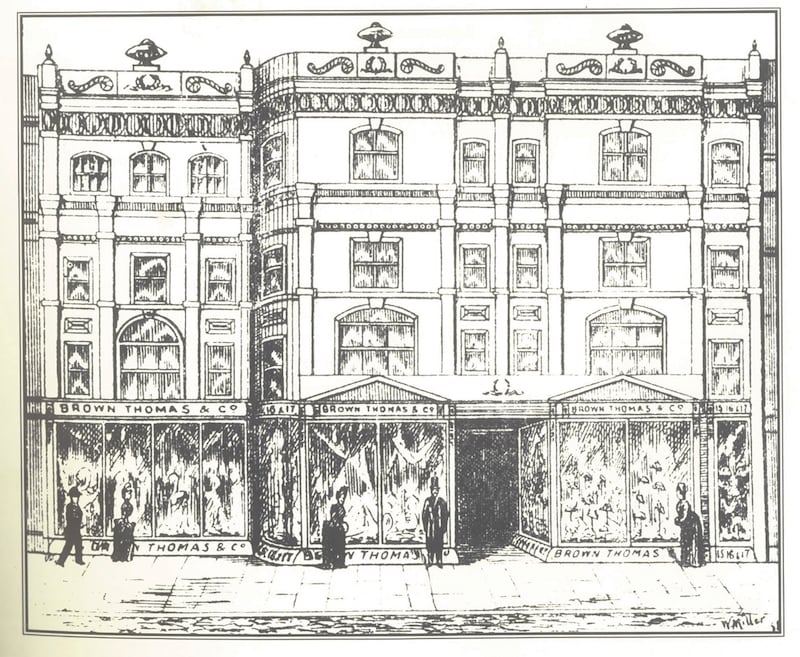
They were an optimistic pair. In 1849 Grafton Street, for all its prestige, was a sorrowful and down-at-heel place. The Great Famine was still running its terrible course and the city’s population was swollen with starving and plague-stricken hordes fleeing from rural devastation. The street’s luxurious establishments, the milliners, jewellers, booksellers, confectioners and cigar-divans, were dilapidated or closed up, their windows pasted with auction and insolvency notices.
And yet, Brown and Thomas were astute. The post-famine period would bring increasing prosperity as radical changes in population and land ownership meant that the aristocracy and well-to-do had more money to spend and a new desire to spend it. This was the era of the new social phenomenon of “conspicuous consumption” created by the industrial revolution across the water. A rich man expected his wives and daughters to display his wealth and success with the costly finery they wore. And Victorian etiquette required an array of different wear for morning, afternoon and evening. By the 1880s the kind of woman who shopped on Grafton Street was spending four times as much on her clothes as she did in the 1830s.
READ MORE
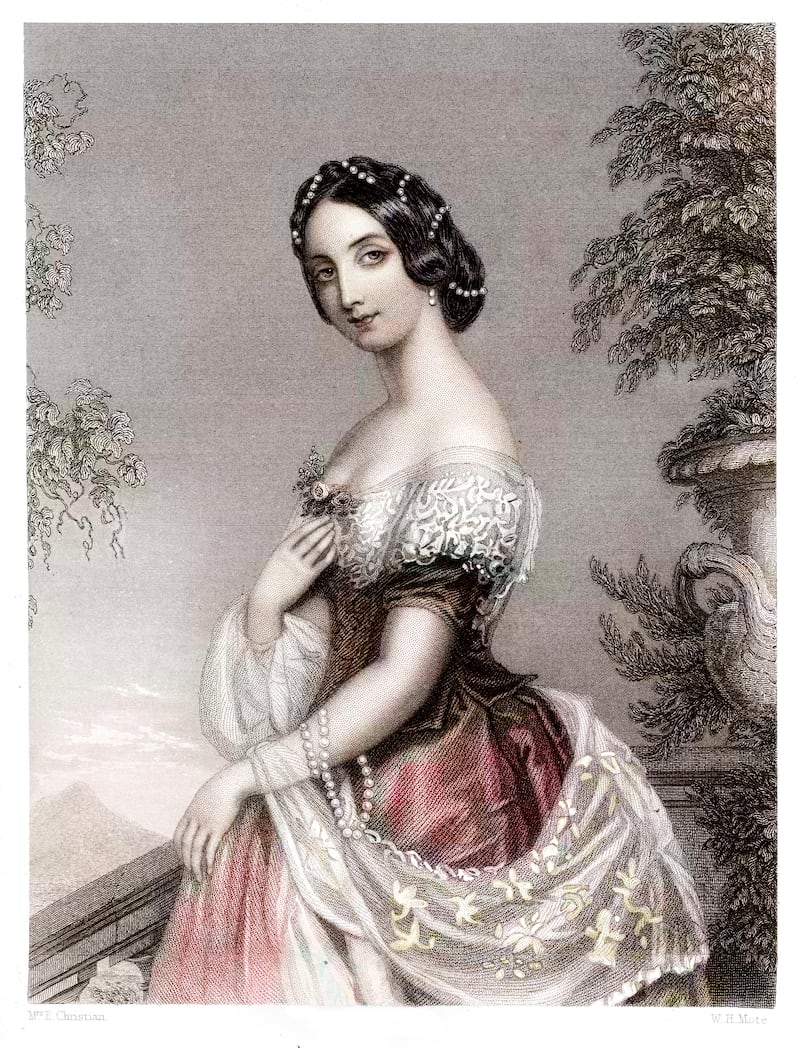
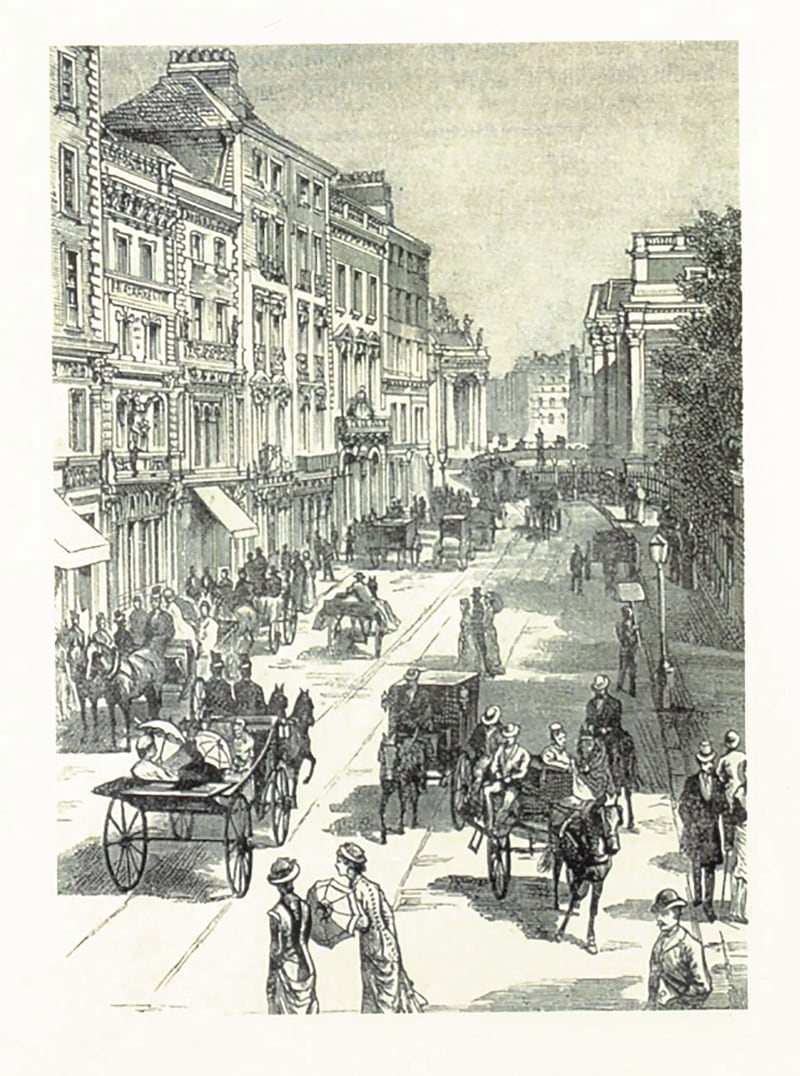
The winds of emancipation were blowing. Queen Victoria’s fondness for trekking in the Highlands made walking popular and the titled were taking to the new public omnibuses to mingle with the middle classes and join them in the new plate-glass-window-shopping. Brown Thomas and Switzers had their Georgian facades and interiors removed and replaced with up-to-date Victorian ones.
The magical light of electrification, when it arrived in Dublin in the 1880s, replaced the oil-lit dimness, silks gleaming in the gloom. A commissionaire stood at the door to greet a loyal customer by name, a shop walker led her to a chair and summoned an assistant to serve her. Labour was cheap and plentiful. A porter stood by to parcel her purchases and a boy to carry her parcels to her carriage or to her seat in the omnibus.
The Viceregal Court, unlike the London Court, had professionals and merchants on its list of invitees to balls and levees and receptions; and if you weren’t on its list you might be on the list at the Mansion House, home of the Corporation and of the nationalism and republicanism that would become the vital political movement of the new century. Wherever you went, you needed finery. To salve nationalist consciences and the recent imperative to “buy Irish” Brown Thomas kept a team of seamstresses upstairs to copy the latest Paris styles in materials of Irish manufacture.
Brown Thomas and Switzers were like little villages. Their staff, about 70 at Brown Thomas and 80 at Switzers, many of them apprentices, lived in the attics, safe from the moral perils of the city – and, provided with bed and board, could be paid little more than pocket money. Also above stairs were the cooks and domestic servants employed to look after them.
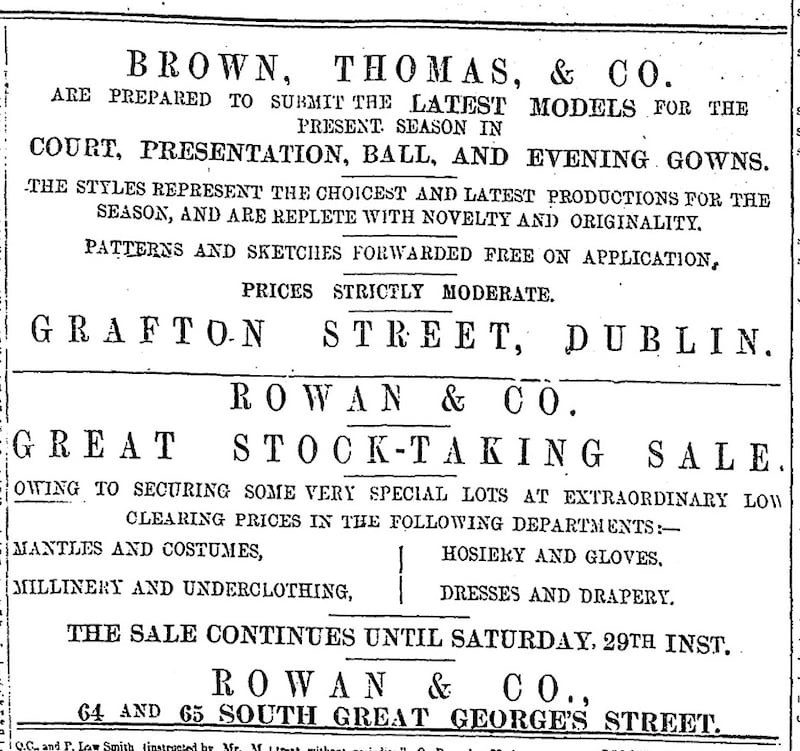
By the 1890s the original founders were dead, leaving great fortunes to their heirs and businesses ready to weather the convulsions of the 20th century, war, rebellion, trade unionism and the fight for women’s suffrage among them. In the meantime, the effulgent Edwardian sun shone on Grafton Street and its shady awnings. A motorcar might come charging, as it must have seemed to the awed pedestrian, up or down it. Motoring gear was the new must-have – goggles, leather aprons and ladies’ silk hoods and yashmaks.
While Switzers was a first-class department store, it had developed a practical character. Brown Thomas was a connoisseur’s delight, appealing to the imagination and the senses. In his novel Ulysses, James Joyce has Leopold Bloom gaze into Brown Thomas’s windows in erotic reverie – “rays of flat silk stockings … silk webs, silver, rich fruits spicy from Jaffa, Agendath, Netaim, wealth of the world ...”
For 1912 sporty white velvet corduroy was recommended for tennis, archery and rinking dresses. In August 1914 Britain – and Ireland – was at war with Germany and a recruitment drive was under way. Employees of the Grafton Street stores who enlisted were offered half pay for the duration and trained nurses could purchase items at wholesale prices. But war also offered a business opportunity. Brown Thomas offered “warm comforts for soldiers” such as army blankets and mittens. Switzers advertised folding bedsteads and kit bags.
War came and went – and in fact was exceptionally profitable for the shops. The rebellion of 1916, followed by years of turbulence, meant that Grafton Street’s doors had to be closed occasionally. But it was largely business as usual. The Ireland of the Free State in the 1920s was poorer and leaner but Grafton Street still had glamour, was still a place to see and be seen.

Change came rather from the Browns themselves. The family’s fortune “went down the Baptist pipes”, as a descendant put it, after Pastor Hugh Brown, a son of the founder and a devout Baptist, persuaded his mother Marianne to support numerous Baptist causes. When in 1919 the shop was sold, it was to an American, department store visionary Harry Selfridge, owner of Selfridge’s in London. Brown Thomas was among his provincial acquisitions.
Selfridge would jettison the old ways, compete with Switzers, which now had a restaurant, a hairdresser’s, a portrait studio. There would be no more snooty shopwalkers to inhibit browsing and impulse buying. He brought in advertising, seasonal sales, modern “hardware” such as bicycles and wireless sets. He encouraged Dubliners to regard the store’s new writing room as a club.
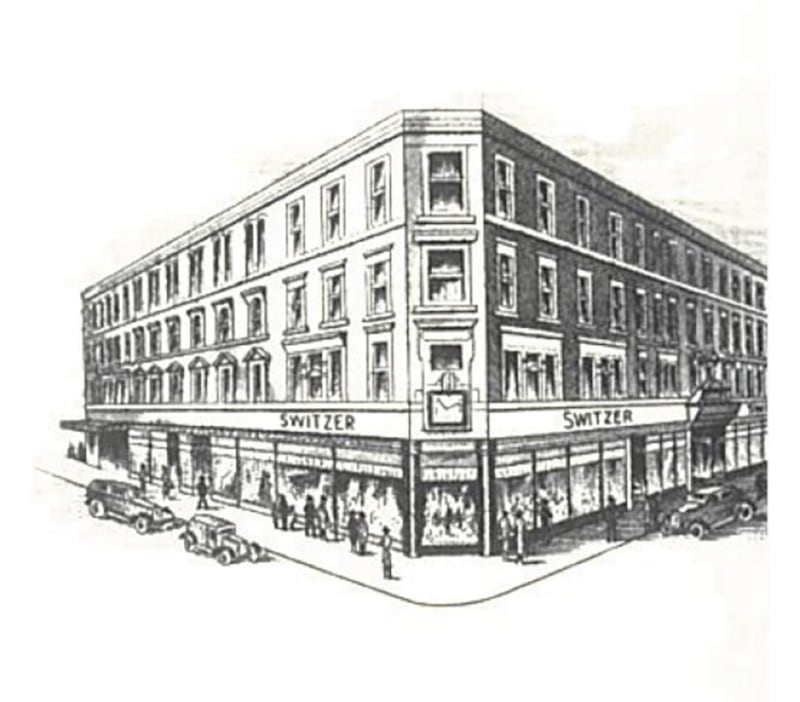
But by 1933 the Selfridge era too was over. Harry Selfridge Junior announced that the company was disposing of its provincial stores – not because Ireland was broke but because his father, an extravagant spender, was. His Irish store would be sold to “Irish interests”.
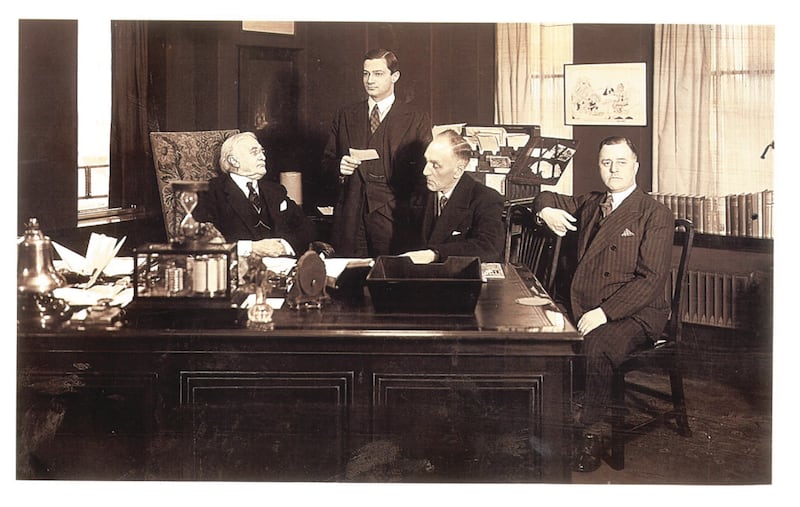
- For the history of Brown Thomas from the 1950s to the 1980s see The winds of change: A thoroughly modern department store
- Anne Haverty wrote Elegant Times, A Dublin story, a history of Brown Thomas and Switzers and also of Dublin, from the 1800s to the 1980s. The book was published by Sonas in 1995.














